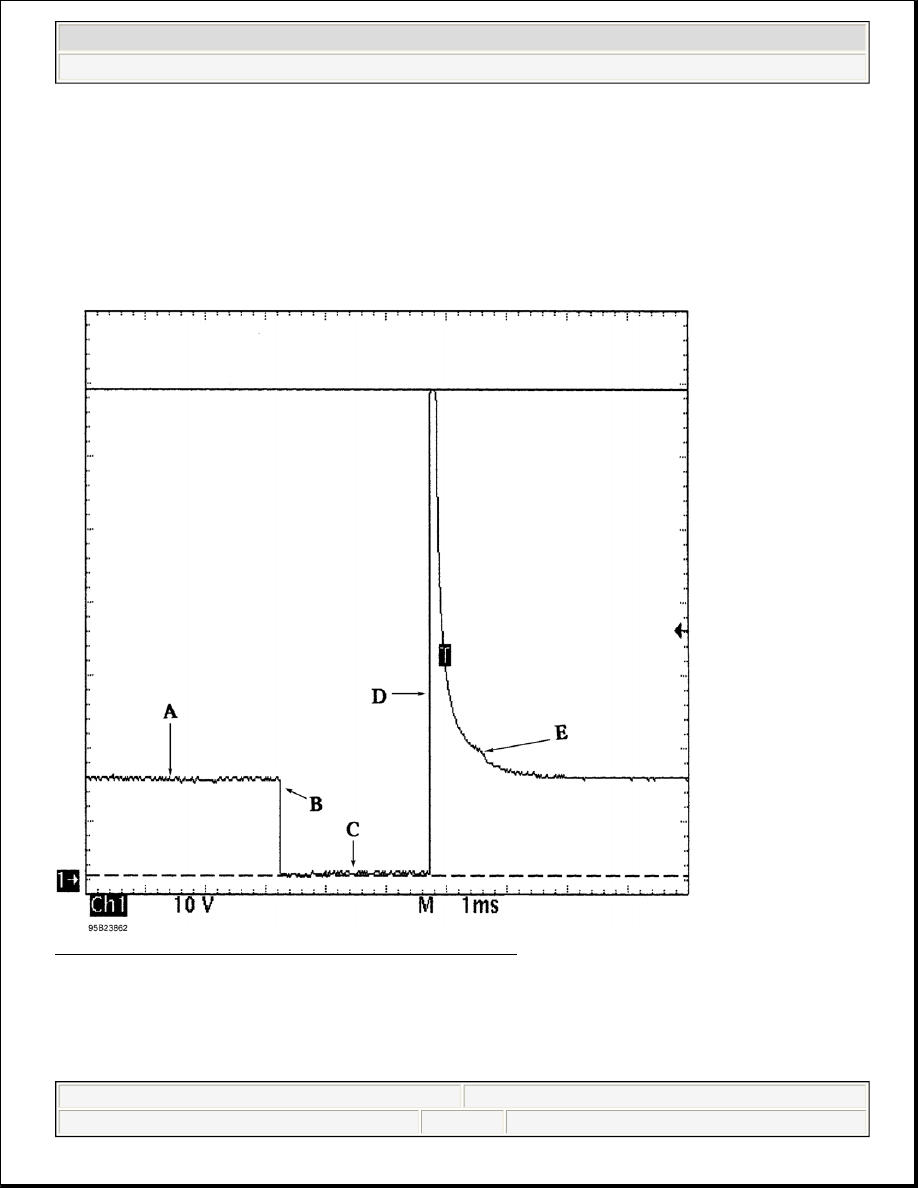Hummer H2. Manual - part 160

occur after the slope has ended and the voltage has stabilized, it is because the pintle is slightly sticking because
of a faulty injector
If you see more than one hump it is because of a distorted pintle or seat. This faulty condition is known as
"pintle float".
It is important to realize that it takes a good digital storage oscilloscope or analog lab scope to see this pintle
hump clearly. Unfortunately, it cannot always be seen.
Fig. 2: Identifying Voltage Controlled Type Injector Pattern
INTERPRETING A CURRENT CONTROLLED PATTERN
NOTE:
Current controlled drivers are also known as "Peak and Hold" drivers. They
typically require injector circuits with a total leg resistance with less than 12
ohm.
1998 Chevrolet Pickup C1500
GENERAL INFORMATION Waveforms - Injector Pattern Tutorial